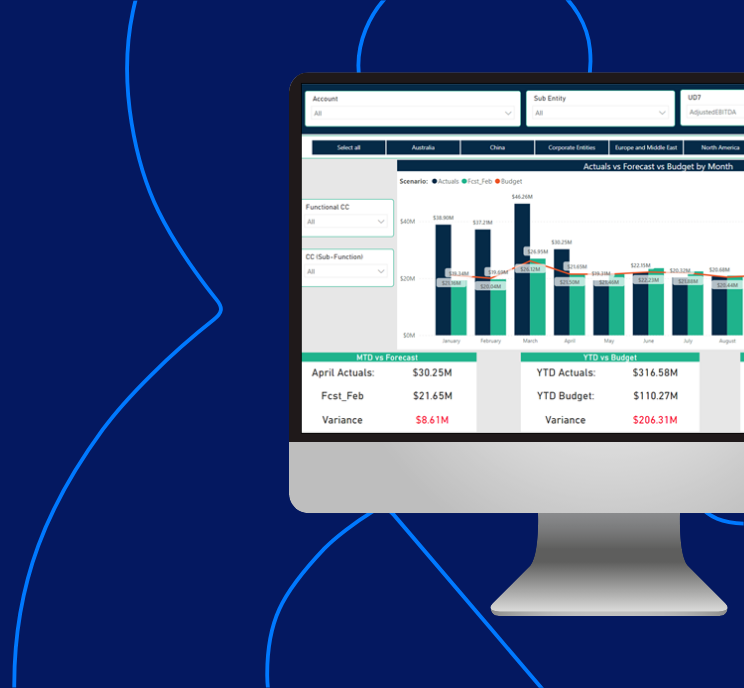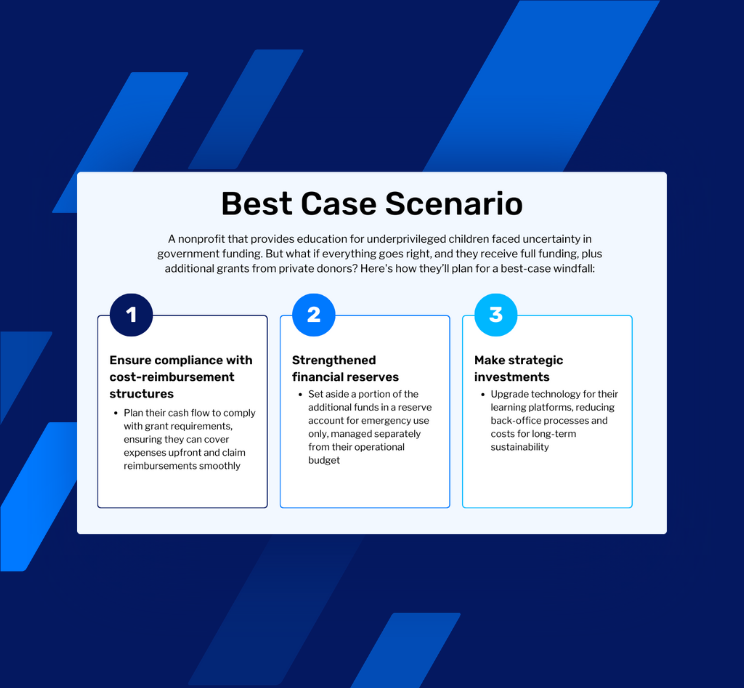In this third installment of our SECURE Act 2.0 series, we discuss additional important changes made by the SECURE Act 2.0 (“the Act”), which was passed by Congress on December 23, 2022, and signed into law by the president on December 29, 2022. The Act contains many enhancements and updates to retirement savings programs, including 529-to-Roth rollovers, early retirement account withdrawals, and retroactive first-year solo-401(k) plan deferrals.
529-to-Roth Rollovers
SECURE Act 2 Series
SECURE Act 2.0: How Do These Changes Affect My Retirement Savings Plan?
Key Employer Retirement Plan Provisions of SECURE Act 2.0
Before the passage of the Act, 529 accounts had limited options for excess funds after the beneficiary completed their education. To reduce reluctance to contribute to 529s due to excess accumulations, the Act allows for limited 529-to-Roth IRA rollovers.
In order to process these contributions, the following requirements must be met:
- The Roth IRA owner and the 529 Beneficiary must be the same person;
- There is a lifetime rollover limit of $35,000 per beneficiary of the 529 account;
- Rollovers from a 529 are subject to annual Roth contribution limits, which may impact additional contributions to IRAs for that year;
- The 529 account must have been open for at least 15 years;
- The amount of the rollover must have been in the 529 account for the past 5 years.
One limit that does not exist is an income limit, effectively allowing high earners another way to make Roth IRA contributions.
Further guidance is still needed as to the effect of switching 529 beneficiaries on the ability to take advantage of this planning opportunity, but we expect that the ability to roll unused 529 funds to beneficiary Roth IRAs will be attractive for some clients.
Changes to Penalties on Early Retirement Account Withdrawals
The Act includes new rules for accessing retirement funds during times of need that eliminate penalties associated with early retirement account withdrawals in specific situations:
Age 50 Public Safety Worker Exception
Prior to the Act, the Age 50 Public Safety Worker exception allowed certain public safety workers who separate from service in the year they turn 50 or older to take penalty-free distributions from defined contribution and/or defined benefit plans maintained by those employers. Effective immediately, this exception now applies to
- Private-sector firefighters
- State and local corrections officers
- Other forensic security employees
In addition, the Act 2.0 expands the exception to allow plan participants who separate from service before they reach age 50 to take penalty-free distributions as long as they performed 25+ years of service for the employer sponsoring the plan. Unfortunately, without further clarification, the plain reading of the statute seems to indicate that the 25+ years of service must be for the same employer and not a combination of service from different public safety employers.
Qualified Disaster Recovery Distributions
In the past, Congress has authorized individuals affected by certain natural disasters to access retirement funds without penalty for a limited time. The Act has now eliminated the need for Congress to re-authorize such distributions for each disaster, or series of disasters, by permanently reinstating Qualified Disaster Recovery Distributions. This retroactively applies to disasters occurring on or after January 26, 2021. To qualify, an individual must:
- Have their principal place of abode within a Federally declared disaster area
- Take their distribution within 180 days of the disaster
Historically, disaster distributions were limited to a maximum of $100,000, but with the passage of the Act, the new maximum is limited to $22,000.
In addition to this permanent reinstatement of Qualified Disaster Recovery Distributions, the Act also enables affected individuals to take larger loans from their qualified plans. The rule prior to this Act allowed participants to take loans up to the greater of $10,000 or 50% of their vested balance up to a maximum of $50,000. Now, participants may take loans up to 100% of their vested balance up to a maximum of $100,000. Repayment dates for certain loans may also now be delayed for one year.
Exception for Individuals with a Terminal Illness
New to the early distribution penalty exception, is an exception for individuals who are terminally ill. The Act provides a broad definition of “terminally ill” that is favorable to taxpayers.
Before, an individual was deemed to be “terminally ill” for most income tax purposes if they have “been certified by a physician as having an illness or physical condition which can reasonably be expected to result in death in 24 months or less.” Now, this period has been expanded to 84 months, or 7 years, and distributions under this exception may be repaid within 3 years.
Exception for Victims of Domestic Abuse
Also new to the early distribution penalty exception is an exception for victims of domestic abuse.
- For this exception, domestic abuse is broadly defined as “physical, psychological, sexual, emotional, or economic abuse, including efforts to control, isolate, humiliate, or intimidate the victim, or to undermine the victim’s ability to reason independently, including by means of abuse of the victim’s child or another family member living in the household.”
The Act authorizes victims of domestic abuse to withdraw up to the lesser of $10,000 (indexed for inflation) or 50% of their vested balance without incurring a 10% early withdrawal penalty. To qualify, the distribution must be made from a defined contribution plan within the 1 year after an individual has become a victim of such abuse. Employer plans and IRA custodians will be allowed to rely on an individual’s self-certification that they qualify to receive this penalty-free distribution, with all or a portion of the distribution being repaid within 3 years.
Emergency Withdrawal Exception
Beginning in 2024, The Act will authorize “emergency withdrawals” from retirement accounts.
- An “emergency” as it applies to this exception, is broadly defined as any taxpayer who experiences “unforeseeable or immediate financial needs relating to necessary personal or family emergency expenses.”
Due to the extremely broad definition of “emergency,” the Act has limited individuals to no more than one emergency withdrawal distribution (with a cap of $1,000) per calendar year. In addition to the annual limit, plans will also be prohibited from allowing participants to take subsequent emergency withdrawals until the earlier of the following:
- The prior distributions have been repaid in full;
- Regular deferrals and other employee contributions made to the plan since the emergency withdrawal total at least as much as the amount of the distribution; or
- 3 years have passed since the previous emergency withdrawal
Exception for Qualified Long-Term Care Distributions
Starting December 23, 2025, the Act allows retirement account owners to take penalty-free Qualified Long-Term Care Distributions up to the lesser of 10% of their vested balance, or $2,500 (adjusted for inflation) annually, to pay for long-term care insurance coverage.
To qualify, individuals must have either paid or been assessed long-term care insurance premiums equal to or greater than their distribution in the year the distribution is made and provide supporting documentation to the plan. Retirement account owners should also note that the Act permits these distributions for the account owner as well as the account owner’s spouse, if they file a joint tax return.
Update to 72(t) Rules
A couple of changes have been made to 72(t) payment rules for the Substantially Equal Periodic Payments (SEPP’s) exception:
- Effective immediately, it allows for annuity payments to meet the 72(t) distribution requirements.
- Starting in 2024, the bill creates an exception to the current IRS rule that prevents individuals from making partial rollovers or transfers from 72(t) distribution accounts.
Prior to the Act, such rollovers or transfers would trigger a retroactive 10% penalty on all pre-59 ½ distributions taken from the 72(t) plan. Beginning in 2024, taxpayers will be allowed to make such transfers and rollovers penalty-free, provided that the total distributions from the two accounts after the partial transfer total the amount that would otherwise be required to be distributed from the 72(t) account.
Retroactive First-Year Solo-401(k) Plan Deferrals Allowed for Sole Proprietors
The Act includes a provision allowing for retroactive first-year elective deferrals for those individuals who are the only employee of the trade or business establishing a qualified plan. This provision is only retroactive for the initial year in which the plan is created; therefore, if you are a sole proprietor or single-member LLC with a Solo-401(k) plan already established, this provision will not apply.
The original SECURE Act made it possible to establish an employer-funded qualified plan for the preceding plan year as late as the due date of the individual’s tax return, including extensions, and have it considered established on the last day of the prior year. However, elective deferrals (employee contributions) to a qualified plan still needed to be made by December 31st of the prior year (the year in which the contributions would apply). Effective for all plan years after the SECURE Act 2.0 enactment date of December 29, 2022, this retroactive first-year elective deferral will change this December 31st deadline to the employer’s tax return filing due date (not including extensions), but only for the first plan year in which the plan is established.
Along with the retroactive plan adoption provision in the original SECURE Act, this new provision for retroactive elective deferrals adds an additional benefit to those in business on their own who want to start saving for retirement. Sole proprietors looking to establish a 401(k) plan will not only have the additional time to see if they can afford to set up a plan but will also have the ability to contribute the maximum employee contribution to the plan for the prior year.
Additional SECURE Act 2.0 Information
We have discussed some of the key changes in previous installments and above, but there are many more provisions that might be important to you.
We encourage you to read the rest of our three-part series to get vital information on retirement planning and/or speak with an advisor to discuss how these changes impact you.
- Part I: Key provisions impacting individual retirement savers
- Part II: The most important changes affecting employers
Advisory Services offered through SC&H Financial Advisors, Inc., an investment adviser registered with the U.S. Securities and Exchange Commission. SC&H also offers advisory services through the doing business as name of SC&H Core. SC&H Financial Advisors, Inc. is a wholly owned subsidiary of SC&H, Inc.
The information presented is the opinion of SC&H Financial Advisors, Inc. and does not reflect the view of any other person or entity. The information provided is believed to be from reliable sources but no liability is accepted for any inaccuracies. This is for information purposes and should not be construed as an investment recommendation. Past performance is no guarantee of future performance.




